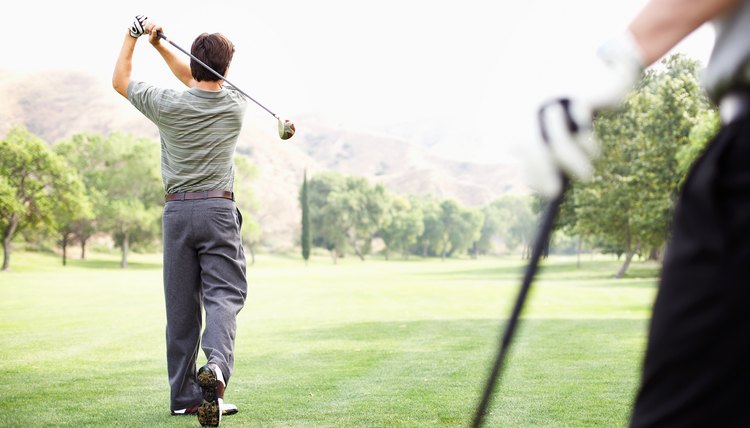How to Stop Flipping Hands Through a Golf Swing

About 80 to 90 percent of amateur golfers "flip" their hands attempting to get the club back to square at impact, says Jack Nicklaus and golf teacher Jim Flick. Flips can be a cupped left wrist at impact that causes a weak, scooped shot or a screaming hook when the right hand flips the club in an over-rotation. Fixing the flip in your swing will help you hit the ball more consistently and with more power.
Eliminate the tension. A good golf swing is about proper setup and taking a backswing and downswing that gets you back at that proper setup when hitting the ball. Flick says the proper feel at impact is when the left forearm is ahead of the ball and the left wrist is slightly bowed, not cupped. He recommends easing the tension in your arms and swinging the club freely to help get your hands and arms into this proper position.
At impact, point your left hand at the target. Hank Haney, who coached Tiger Woods for six years, says: "Ideally, the back of the left hand should be facing your target at impact; that is your key." A left hand facing left of target at impact will send the ball left on a hook or pull, and the left hand pointing right at impact will mean a push or slice.
Shift your weight properly through the swing. Tiger Woods' previous instructor, Butch Harmon, says that to practice a proper weight transfer, hit shots off a slight downhill slope. This will force the weight to transfer and promote the feel of hitting down and through the ball, which will keep you from flipping your hands to compensate for poor weight transfer.
References
Writer Bio
Jeff Rogers has edited and written since 1987 for the Associated Press, United Press International and six newspapers including "The Dallas Morning News," "The Washington Times" and "Dallas Times Herald." A Charlotte native who holds a bachelor's degree in journalism (news-editorial) from the University of South Carolina, Rogers has also worked as a technology analyst, sales executive and professional golf caddy.
